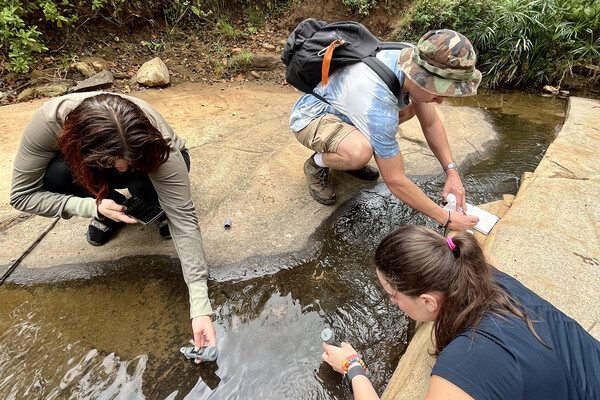
Griffin Pitt, right, works with two other student researchers to test the conductivity, total dissolved solids, salinity, and temperature of water below a sand dam in Kenya.
(Image: Courtesy of Griffin Pitt)
Telemedicine visits surged during the pandemic as primary care practices sought to reduce the risk of COVID transmission. Telemedicine provides a key lifeline for patients most vulnerable to COVID infection and eliminates transportation as a barrier to primary care. But it also raises access, quality, and equity issues for patients who may have difficulty using telemedicine, including older adults. A recent study in the Journal of the American Geriatrics Society finds that telemedicine could be beneficial to older adults, but there are significant disparities that must be addressed to improve care quality and equity.
Studying nearly 20,000 patients aged 65 and older revealed that use did not differ by age or gender, but did differ by race. Black patients were more likely to access primary care via telemedicine compared to white patients, while Hispanic patients were less likely. Overall, people who had a telemedicine visit actually had a lower risk of hospitalization for conditions thought to be preventable, probably because of appropriate triaging of high-risk patients to in-person visits. However, Black patients seen via telemedicine had a higher risk of being hospitalized for these conditions compared to white patients. Among telemedicine patients, those in the oldest age group (85 and older) also had a higher risk of hospitalization for these conditions compared to adults 65 to 74 years of age.
For telehealth visits to succeed, patients need access to and knowledge of how to use telemedicine platforms. That can pose a challenge for older adults and people with low income, who have less access to technology and the internet. Older adults are also more likely to have vision, hearing, and cognitive impairments, which can make virtual visits more challenging. Additionally, geriatric syndromes have subtle presentations that may be difficult to detect without an in-person visit.
This story is by Rebecca Brown and Kira L. Ryskina. Read more at Penn LDI.
From Penn LDI

Griffin Pitt, right, works with two other student researchers to test the conductivity, total dissolved solids, salinity, and temperature of water below a sand dam in Kenya.
(Image: Courtesy of Griffin Pitt)

Image: Andriy Onufriyenko via Getty Images

nocred

Provost John L. Jackson Jr.
nocred